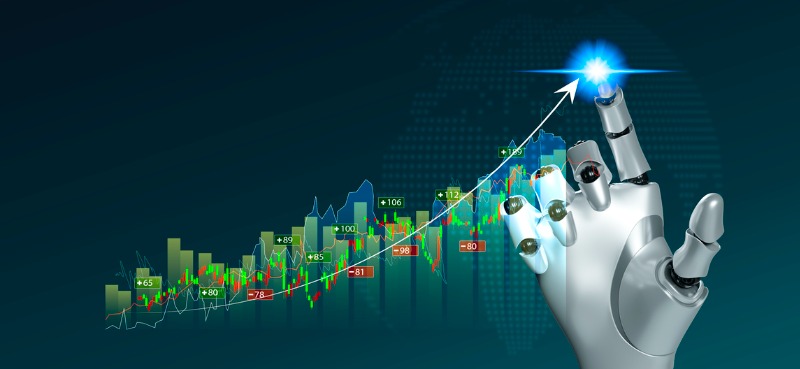Frank Curzio
Retailers are in big trouble
I kick things off today with a special announcement: We’ll be launching WSU Premium next Wednesday (March 1). Find out all about the new features and benefits we’ll be adding to the show—and how to become a member.
This morning, we got the latest earnings results from two of America’s biggest retailers: Home Depot (HD) and Walmart (WMT)…
I highlight some troubling signs for HD, including one key metric that just fell for the first time since 2009. And there’s more bad news when you look at the company’s costs… and the expensive price tag for its stock.
Turning to WMT, the company delivered solid quarterly results but weak guidance for the year ahead. I share some red flags I see in WMT’s outlook… and why the stock doesn’t look like a bargain at current levels.
Bottom line: The latest results show there’s more pain ahead for retailers. And investors need to be cautious as the bullish thesis for the stock market falls apart.
Wall Street Unplugged | 1010
Retailers are in big trouble
Announcer: Wall Street Unplugged looks beyond the regular headlines heard on mainstream financial media to bring you unscripted interviews and breaking commentary direct from Wall Street right to you on Main Street.
Frank Curzio: How’s it going out there? It’s February 21st. I’m Frank Curzio, host of the Wall Street Unplugged podcast, where I break the headlines and tell you what’s really moving these markets.
Frank Curzio: So, quick announcement before I get started, very exciting times. Next week, we’re going to be launching Wall Street Unplugged Premium. It’ll be a paid product, which includes two podcasts, not just Frankly Speaking. Another podcast. Me and Daniel are going to be breaking down stocks and ideas. But now, from that podcast, going to be recommending one trading idea every week. And this trading idea is going to be found in our Dollar Stock Club portfolio. So, that’s our newsletter. And yes, The Dollar Stock Club newsletter will also be included in Wall Street Unplugged Premium. That’s going to be included in your membership. And these are going to be weekly trading ideas. So, we don’t offer any product like this under our umbrella, Curzio Research right now, because these are really trading ideas.
Frank Curzio: We’re going to look to get in and out of these names. Sometimes, we’ll be days, sometimes in weeks, maybe in months, depending if our thesis is still intact. And every idea is also going to come with a one-page writeup, which includes a buy-up-to price, a stop loss, and several bullets on why we like or dislike the name. For example, what do we see today? Home Depot, Walmart reported earnings this morning. Based on the reaction of the stocks on that day, we may look to recommended one of these names as a trade in Dollar Stock Club. So, not only are we going to break it down to positives and the negatives of these companies, but we’re going to be doing it in detail, sharing our research tools which we pay. Well, let me rephrase, I pay over a hundred thousand dollars for every year, which we need in research from Goldman, Bank of America, JP Morgan, Morgan Stanley, Evercore. Love to hear their opinion. That is the consensus.
Frank Curzio: So, if you could prove them wrong, whether you think it’s too optimistic or too conservative, that’s how you make money in stocks, because all these guys have reports and that’s the number that you see on TV when the number’s reported. If a company beats or doesn’t beat, that’s median estimate of all these analysts. So, having access to this type of research before the number comes out is very, very valuable. I’m going to be able to share a lot of that stuff with you guys. If you’re looking at sites like CNBC, Thompson First, Cole, they’ll charge you a fortune. You see a lot of this research on Zero Hedge, Market Watch, The Street. So, you’re going to have access to it.
Frank Curzio: The best part is the trading ideas are not going to be limited to just going long on a stock. As we know, not everything goes up and up, and not everything goes down and down. So, you’re going to see option trades where we may buy puts on companies we do not like, or calls on the ones we think could pop in the short term. Could see recommendations in crypto, maybe NFTs. In short, there’s not going to be any restrictions on this portfolio. If there’s someplace that we believe that you could make money in the short-term on a trading idea, we’re going to recommend it, you’re going to see it show up, across any single asset class that you could possibly think of. That’s going to be the fun part. You’re going to see that all in Dollar Star Club.
Frank Curzio: Also, included in Wall Street Unplugged Premium, Daniel will be doing a video update every two weeks, letting you exactly know how we feel in each position, including if we still like the name, if we’re going to add to the position, sell the position, and take some profits by selling half. But every two weeks, you’re going to get this update.
Frank Curzio: Now, why are we doing this? What’s the goal of Wall Street Unplugged Premium, which was thought out in many, many months? But we want to provide the best independent research. And when I say independent, it’s important for you to understand that. We don’t get paid to recommend any stock. We don’t have an agenda. We don’t have to be careful what we have to say, to apologize to saying how we really feel. Our only goal is to make you money. If not, you cancel your subscriptions across our products. That’s it. It’s that simple. So, either we show up, or we can’t feed our families. That’s how easy it is, and that’s the way it should be across the board. And we see this just in sports, especially. I mean, the contracts that get paid. You see the All-Star Game. People sitting out and showing up like the day before, and I mean, what a disaster that was this weekend.
Frank Curzio: It’s horrible. But people forget it. It’s the people. It’s you that determine so many different things when it comes to politics, when it comes to sports, and what you want to see and why these guys are sitting out now, and everything’s about them, them. But they have to realize without the people, none of that exists. So being independent, it forces us to show you, to educate you. Give you these ideas, talk about things that are off limits to so many people out there that you hear on TV, or see on TV or you’re reading in different places, because we do not have an agenda and you know that. So, we’ll probably off some people. That’s okay, because our sole goal is to make you money. And Wall Street Unplugged Premium, that’s the point here, right? We want to provide unbiased research to our best members while also educating you, helping you to avoid the mistakes that I made over my 30-year career.
Frank Curzio: That’s the reason why we built this business. It’s the reason why it’s been doing good over the past few years, since we started, since we launched, was it five years now? I’m excited about this product. To subscribe to Wall Street Unplugged Premium, you can only do it one way. You must go to www.wsuoffer.com. So, it’s Wall Street Unplugged, wsuoffer.com. Most companies in our industry would charge anywhere from a thousand to $5,000 annual for trading newsletters. You guys know it. We know the statistics. Most people subscribe to newsletters, subscribe to numerous newsletters throughout the industry. And those trade newsletters are a fortune, even on a monthly basis. They pay a hundred dollars to $500. Believe me, I know the people who are writing them. I know everything in the industry. This is the industry I grew up in since I was a kid.
Frank Curzio: It’s Wall Street Unplugged Premium. It’s only going to be $10 a month. You can cancel any time. It’s also going to include two podcasts, right? Video portfolio update every two weeks. Tons of new content. Also, special videos from me in the field. As you know, I travel a lot, talking to CEOs, industry insiders when I’m attending Biotech, mining conferences. All kinds of conferences including the CES, which is the Consumer Electronics Show, because I’ve been doing that for 12 years now. That coverage videos, also going to be under the Wall Street Unplugged Premium brand. Our official launch date is March 1st. We should be keeping the score at home. That’s next week. So, that means this will be my last podcast that I’m going to be doing on Tuesdays. To get access to Wall Street Unplugged Premium, you go to www.wsuoffer.com. And again, that membership is only $10 a month, and if you hate it, you can cancel it at any time.
Frank Curzio: Now, let’s get to Home Depot and Walmart, which just reported earnings today, Q4 earnings. And keep in mind, I’m going to break down these companies tell, you what to do. The analysis you’re about to hear going forward, it’s only going to be provided for Wall Street Unplugged Premium members. Let’s start with Home Depot. Look at a Q4 earnings. Came in at $3.30 cents. It beat by one cent. Sales a little light. Stock’s getting hit today. It’s down about 5% on this news. I think it should be down even more and the stock is up year-to-date. But it’s crazy, giving the massive headwinds that we’re seeing. I mean, higher rates, yes, higher rates was a story. And yes, the Fed’s raising rates. Have you seen what rates have gone in the past couple of weeks? Last three weeks? Because of the reports that we got showing that inflation is not slowing any place, anywhere near the Fed wants it to be slowing down.
Frank Curzio: So, you’re looking at not just macro part, right, but you’re looking at existing house, even the common sense. Just use your common sense behind it. What are you seeing with homes? I mean with interest rates higher, obviously, it’s going to be less home sales, right? 11 straight months now of lower existing home sales. That number came out today. 11 straight months directly impacts Home Depot. What happens when you get a new home? You start building new stuff and yes, people might fix up their houses and stuff like that, but this was a massive booming market that I know personally, because I’m building a house and the prices that we’re charging for the same thing, whether it’s epoxy for my floor, whether it’s a screen enclosure. I mean, the prices range from, I mean, anywhere pricing-wise, 5,000, and for the same job, people will quote me, 12,000. It’s insane.
Frank Curzio: And they enjoy this great bull market. Just lower interest rates, free money, everybody buying houses is just a massive market. Well that’s what happens when we have super, super low interest rates, which we don’t have anymore. Hey, where are mortgage rates today? Are they over 6.5%? They were 3% to start last year in January. That’s a massive, massive difference. Takes a lot of people out of the market, in terms of affordability. This is Home Depot, this is the home builders and the home builders continue to go up. They’re finishing their projects. But what about a year from now, two years from now, what’s going to happen? And you think they should be trading at all-time highs? Business is going to be better next year than it’s ever been for these companies in history? Are you crazy? Over the next few years where rates are? Highest levels, since, man?
Frank Curzio: Hey, look at inflation where it’s since the eighties. So, we get the CEO at a conference call, saying he expects more price sensitivity. So, what does that mean? Lack of pricing power, and it’s evident when you look at their numbers, guys. So, you’re seeing transactions and you saw this a lot. You saw transactions down. So, the amount of transactions, amount of people buying stuff are down, but ticket sales are up. So, you’re seeing transactions are down 6%, which is massive. However, ticket sales were up 5.8%, meaning that you had pricing power. So, you’re raising prices on the fewer people that are going there to buy stuff at your place. And this is normal across the board, but usually those ticket sales were higher than transactions being down. So now, transactions are down 6%, but ticket sales up 5.8%.
Frank Curzio: So, you have these customers buying less, right? Paying more, buying less. Now you’re losing pricing power, which is huge because as we saw inflation go up, what happened? Companies continued to raise their prices and they raise prices much, much, much more than inflation. Don’t listen to what they tell you. They’re all bullshitting you. That’s why their margins are much, much higher. Their margins should be even to last year, if they raised prices the same amount as inflation. They’re raising them much, much more than inflation. But a lot of companies this earning season, are saying the same thing.
Frank Curzio: They’re saying, “Well, pricing power might not be there.” And you had Home Depot CEO said, “The acceleration was more pronounced in Q4.” So, not seeing it better, again, what we’re hearing throughout earning season. But the bigger points here is when you look at same store sales. Same store sales are sales. This is the big metric in retailers and restaurants, they’re from sales from stores that are open 12 months or more. So Q4, and Q4, and this is compared to last year. Same store sales fell 0.3%. It does not sound like a big deal. It’s a big deal when you see Walmart and 12%, 8% same store sales. And Sam’s, which is part of Walmart, which is 12%. So, if you’re listening to Home Depot, same store sales for Q4 fell 0.3%. This was the first decline in same store sales comp, which is comp means it’s comparative to the last year, that Home Depot saw since 2009. That’s why it’s a big deal.
Frank Curzio: Also, you’re seeing sales came in a little bit light, 35.8 billion. They were expecting 36 billion for the quarter. So, when you look at sales and they compare to analyst estimates, sometimes you shouldn’t really look the analyst estimates because these estimates have been significantly lowered into this quarter. So, you’re just seeing a number on TV and be like, “Wow, they beat, that’s great, they beat,” but it’s significantly lowered, right? The analysts lowered those estimates. So, let’s put this into real world terms. Because if you’re looking at the sales that they reported, 35.8 billion, it amounts to a 0.3% increase year over year in sales. If you’re looking from this year, they reported Q4 into next year. So this year, those earnings are $16.69. Next year, you know what they’re going to be? $16.65. That’s a decline year over year.
Frank Curzio: So, you’re looking at sales, relatively flat. Earnings expected to decline year-over-year; yet, Home Depot is trading 18 times forward earnings. And then you say, “Wait a minute, Frank, but these companies are going to do a great job cutting costs.” And that’s been the theme. That’s been the theme. “Let’s cut costs, let’s show that we have these structures, let’s lay off employees.” And that’s resulting in a boost to earnings. And right now, that is the thing that Wall Street wants to see. We saw that with Meta, popped 20% plus. It was the cost-cutting. It wasn’t like the quarter was absolutely great. The stock was down what, 50, 60% from its highs and it ramped up higher, but cost-cutting and that’s what they wanted to see. That’s what we’re seeing. But listen to this with Home Depot, because this is bad news here.
Frank Curzio: This is a company that could cut costs and all these companies are going to do a great job cutting costs, but they said they’re spending an additional $1 billion to raise compensation for hourly employees. I’m not sure how it is by your Home Depot, even Lowe’s. But where I am, and this is like a three store sample, there’s almost nobody on the floor to help people. You have to go, I have to look through six, seven different aisles or 30, 40 aisles they have there, just to find someone. And when you go there, a lot of it, do it yourself projects and you need help. You want to know exactly what to do, and there’s not a lot of people to help you out.
Frank Curzio: So, that’s the problem that so many companies are running into as well. Cut costs and cut employees. Hate that. But, they’re like, “Okay, well we’re going to raise the salary for these employees and make sure that we can get them in the store because,” and not only that, you need to pay them pretty good because they need to know what the hell they’re talking about. It’s not like Walmart. You have people just randomly walking around, you ask them about any item and they’ll take the box and read the back of the box to you. And you’re like, “Okay, I could do that.” They just, whatever. And it is Home Depot. They have to know about their projects. I mean, there’s a learning curve there.
Frank Curzio: So, it’s not going to be easy for Home Depot to cut costs to beat these analyst estimates, which again are going to be revised sharply lower, going into quarters and quarters and quarters, which we’re seeing in the past three quarters, two quarters. Now, we’re seeing into next year. But more importantly, again, common sense point of view here with Home Depot. How do you see our economy, six to nine months from now? Think about that and be honest with you, maybe you have conservative or aggressive assets. You’re going to see higher rates, you’re going to see consumers definitely cut back on spending. That’s what higher rates does. Fed’s removing liquidity from the system as well. Quantitative tightening.
Frank Curzio: You seeing existing home sales plunge. You’re going to see much lower home sales, fewer home sales, and it’s just not a good scenario for Home Depot, which seems to be priced for perfection at 18 times forward earnings. So, be careful at Home Depot. We took profits in this granted early. It was one of the stocks we recommended during COVID, which was deemed one of the few places that were allowed to stay open by the government. And we did very well on, I think all those picks. Whatever, Target, Walmart, I forget the rest of them. But anyway, Costco.
Frank Curzio: But be careful here. There’s a reason why the stock’s down 5%. It could come down further, but what’s the catalyst here? “Oh, earnings are going to grow.” Not really. “We could cut costs.” You can, but now you’re paying more money for employees. It’s hard to see the bullish case of why to buy Home Depot here. And I’m not too sure what that dividend is, but I know you can get paid that dividend from any place. Not to mention six-month C-bills are at 5% right now, so dividends are kind of meaningless. I’d rather take the 5% risk-free than take a chance on Home Depot when everything, just the headwinds that they’re facing are huge.
Frank Curzio: Let’s go to Walmart. Reported solid Q4 results. I mean the numbers are great. Same store sales grew by 8.3% and massive. That was much higher. That was higher than last quarter, much higher than two quarters ago. Sam’s Club, which is part of Walmart, right? Big box, is kind of the Costco competitor, also solid. Same store sales grew over 12%. That’s a number you should look at if you own Costco. That’s very, very good. I mean, 12% year-over-year. Holy cow. Walmart also did a great job reducing inventories. But all around, really solid quarters, solid year for Walmart. This is Q4 report of the year, but stocks do not trade on the past. They trade on what’s going to happen in the future. And Walmart said they only expect same store sales to grow for the full year of 2024, again, they just grew at 8% plus. They said from 2% to two and a half percent. That’s much, much slower growth.
Frank Curzio: The prices are very high. Told the suppliers, they must start lowering their prices. It tells you Walmart is going to struggle to have pricing power. When you’re pressuring your hundred thousand plus suppliers, it’s not a good sign. Like, “Hey, you guys are done. We’re going to try to use somebody else,” or whatever and quality goes down, whatever it is. But the days of raising prices and having that pricing power are coming to an end for many, many companies. When you look at some of the biggest names where pricing does not matter at all, which is Chipotle and Lululemon. And both of those companies also reported tough quarters because finally people are like, “All right.” Lululemon, I don’t know if they have cocaine in those pants or whatever. Holy cow. I mean, my daughter’s into them now, but it’s like a hundred dollars for pants, and they’re a great product but it’s just, holy cow. I mean the prices are insane, insane.
Frank Curzio: But now, they’re not seeing that massive huge demand, which is incredible for such a long time for Lululemon, even Chipotle’s as well, for a restaurant. It’s like, “Okay, chicken and rice, I don’t want to pay 10, $12.” With the drink, sorry, $13. You want to pay $14 for a sandwich, which I paid for at Subway with chips and a drink? Are you kidding me? These are the prices that you’re paying. I just bought my mom a Mother’s Day card, or not a Mother’s Day card, I’m sorry. A birthday card, because we celebrated her birthday just recently. 80th birthday. I didn’t even realize it, because it was a really, really nice card. It was a nice card, she loved it. It was $10 for the card, $10 at CVS. Are you out of your mind? $10 for the card? Holy shit. I didn’t realize it.
Frank Curzio: We got, bought a few things there and then I was like, then again it was time is of the essence, with everything going on with my life right now. Trying to get the house done and driving the kids back and forth, getting crazy right now. The house was supposed to be done over a month and a half ago. It’s still not done. So, we’re still driving the kids four hours a day, hour there, hour back and then the pick-up, hour there, hour back. And now, they’re making friends at the new school. So, they have things, and they have different events, and one of them is doing track, one of them is doing gymnastics, so we’re driving them on the weekends as well, which is crazy. So, for me to say, “Ah, I’m not paying for this,” and go to another store, and another store, I just don’t have the time. Granted, I’m an idiot for not looking at the price. But how much more do you think these companies are going to be able to raise prices?
Frank Curzio: To me, this tells me Walmart’s going to struggle to have pricing power, as they’re telling the suppliers, “Hey, you know what? Enough, enough, it’s enough. Stop raising prices.” Also, Walmart did not provide same store sales guidance for Q1. They did say they expect earnings to come in at around a $1.28, which was lower, much lower than the $1.35 expected. But not providing same store sales guidance, again, which is sales that are from stores that are open 12 months or longer. And if you do this or if you did this pre-COVID, your stock used to get hammered. At least by 5%, sometimes much more, because investors in Wall Street, they hate uncertainty. And when you have a company like Walmart that’s always providing that next quarter, that same store sales guidance and suddenly doesn’t, it’s not because it’s going to be good news. It’s because we can’t figure it out yet. Again, uncertainty is a death of all stocks.
Frank Curzio: Walmart is holding up and it’s flat right now. Again, those numbers were fantastic and people are saying, “Well, this is probably conservative. They’re probably going to grow a lot faster than we think, and these are conservative numbers,” and maybe they’re right. And Walmart has earned that with this quarter. Home Depot’s quarter wasn’t that bad, and they’re kind of also warning and saying, “We’re not going to see strong growth and Q4 was pretty weak, and it looks like it’s going to be even weaker going into next quarter.” Walmart supported a great quarter, it’s a little bit different. But when you’re looking at if you should buy Walmart here, I don’t know. I’m not sure. Because what are we seeing? Walmart is doing the same thing that everyone else did. I don’t say everyone else, but most companies did during earnings season.
Frank Curzio: What did they do? They said, “Hey, you know what? Next quarter, next year, kind of uncertain, conservative.” They’re seeing consumers pull back. It’s a company that’s beating revised estimates that were lower, but you know they’re going to see consumers pull back. It’s why you’re seeing so many companies lay off employees, especially over the past six to eight weeks. Again, Wall Street loves that. They love the cutting cost aspect, but this is the last six to eight weeks. This hasn’t happened, six months ago it started, but list the amount of layoffs over the last two months have been incredible. And companies do not lay off, if they believe that business is going to get stronger going forward. They’re not going to do that. They’re going to cut to this extent. Maybe some companies may, because you can get away with it because everyone else is cutting and you’d rather cut fast, because you’re could always hire.
Frank Curzio: It’s a big mistake a lot of CEOs make. They wait and wait, especially for small businesses, when just cut fast, you could always hire. And the fact that everyone else is cutting gives you an excuse to maybe, but still. When you’re looking at earnings season, this was not a good earning season. They’re down over 2% in earnings, year-over-year. We’re going to be down over 5%, and they keep getting revised lower and lower and lower. So again, Walmart is flat right now, but it trades at 23 times forward earnings. The good news for them, compared to Home Depot, who’s projected to probably see, their sales and earnings and probably going to not grow year-over-year, and trading 18 times forward earnings. But Walmart, you’ll get earnings per share, expected to grow 7% annually, which is probably on the high end of most companies. So, 7% annually over the next two years. That’s what’s projected.
Frank Curzio: We’re also seeing sales, right? Top line growth at three to 4%. Again, those numbers are higher than estimates, so maybe they deserve a little bit of a premium, and not sure if it justifies a 23 times PE, but again, this is what we’re seeing during earning season. Companies beating estimates of a sharply revised lower, guidance was not great, and most names are trading at very expensive valuations. It’s why you need to be careful.
Frank Curzio: I mean, you’re looking at the markets, guys. I don’t care if you’re an amateur investor, you just started investing. You’ve been around for a long time. You’re a hedge fund manager. You go back 30 years of my career, you usually don’t see stock prices go higher while earnings are going sharply lower. And you could say, “Well, Frank, if you look at the macro backdrop in the Fed and stuff like that,” yeah, you had that the last 10, 12 years. But the macro backdrop, if you look going forward right now and say the next six or 12 months, I mean we just saw the past few weeks, plenty of data highlighting that inflation’s not coming down fast enough. That’s why we saw an incredible jump in interest rates across the board.
Frank Curzio: And that’s telling you the Fed is not even close to ending its tightening policy. That was the bullish thesis up to a month ago. One more rate hike and then we’re good. And at the end of the year they start cutting, and we avoid recession. That was a bullish case, okay? You might avoid recession because you’re seeing inflation start to pick up. It’s not coming down, it’s just not really coming down in so many different areas. Talk about retail sales, talk about, you saw energy coming down a little bit, but man, it is scary out there. It suggests that, forget about… Anyone who thinks that there’s going to be a cut this year is out of their mind, unless we see just a total collapse across the board of equities and asset prices, and homes in general. But none of that tells you that the Fed is going to raise rates much higher than most believe.
Frank Curzio: That’s why you’ve seen a huge jump in rates. I don’t think that’s being priced in the stocks right now, especially stocks trading at 18 times, 23 times forward earnings. If you’re looking at the last five years, I think it’s around 18 times. That’s the average PE over the last five years. That’s when the Fed was buying bonds, printing money like crazy. Rates were super low. We’re not in that environment now. We should be trading at much, much, much lower multiple. And that’s going to be factored in. It could take three months, could take six months, but it’s hard to see where the bid is going to come from.
Frank Curzio: Types of moves like we’ve seen are common in bear markets. And you even have Jim Cramer going, “Well, this is a bull market now.” And I don’t know if that’s the ultimate tell that you should get the hell out of the market, but I don’t want you to get the hell out of the market. There’s lots of names out there that are well-priced, that are growing earnings, that are in the right trends. But a lot of these names had come back even in technology when those results were not that good, only because they cut costs. Be very, very careful.
Frank Curzio: You could select different areas and say, “Well, China’s back.” Look what’s happening to China stocks today. Getting annihilated. What was that? That trend was what? Two months. These trends are two months. It’s not like you could buy something and say, “Wow, this is in favor and this trend, this secular trend for the next five years.” There’s no secular trends, long-term trends anymore. It’s rotation of money into certain areas. Remember when the industrials were great, when technology was getting hit? “Industrials are the place to go.” “Rates are going higher, banks are the place to go.” Now, banks aren’t the place to go. Industrials are out of favor. Now, technology all of a sudden is good. It’s back in favor. China stocks are in favor. Now, China stocks are getting annihilated. What about oil stocks? Remember that trend? You want to buy oil stocks? “Hey, I’m in at a great price and I’m great.” Well now they’ve gotten annihilated, and continuously. Natural gas? Natural gas is pushing $2, holy shit. $2, natural gas.
Frank Curzio: I cannot buy it here with a two, three year outlook. That’s pretty cool. But you see the money sloshing around, going in and out. I mean, it’s not like you could buy something and say, “Hey, wow, there’s a disconnect here and I love this stock, and this stock has a great long-term outlook.” I mean, the trend changes almost immediately, weeks, months. And it’s funny seeing the guys on TV just scramble. “We love this sector. This sector’s going to be great for years. I’m out of this stock.” I’m like, three weeks later. “It broke the 200 day. I’m out of this stock now.” I thought you were in it for the next long term. That’s the market we’re in. It’s tough. It’s especially tough for individual investors, because the volatility that we are going to see, the craziness we’re going to see.
Frank Curzio: I mean, how often do you see rates pop? The mortgage rate was what, 5.8, three weeks ago? Was it 6.5, higher than that now? And look at the explosion of the two-year, the 10-year. It’s insane. That’s not associated with a healthy market. You don’t see moves like that in healthy markets. So, just be careful out there. Be very, very careful.
Frank Curzio: Hey guys, that’s it for me. Be sure you mark March 1st on your calendar. That’s when we’re going to official launch Wall Street Unplugged Premium. To subscribe, you can go to www.wsuoffer.com. I’ll see you guys tomorrow. Daniel and I will be breaking down the markets and some more earnings. See you then. Take care.
Announcer: Wall Street Unplugged is produced by Curzio Research, one of the most respected financial media companies in the industry. The information presented on Wall Street Unplugged is the opinion of its host and guests. You should not base your investment decisions solely on this broadcast. Remember, it’s your money and your responsibility.
Editor’s note:
During the bear market of 2022, Moneyflow Trader members had the chance to lock in 18 winners for gains as high as 271%.
With many stocks set to get crushed again… this is the perfect strategy for 2023.























